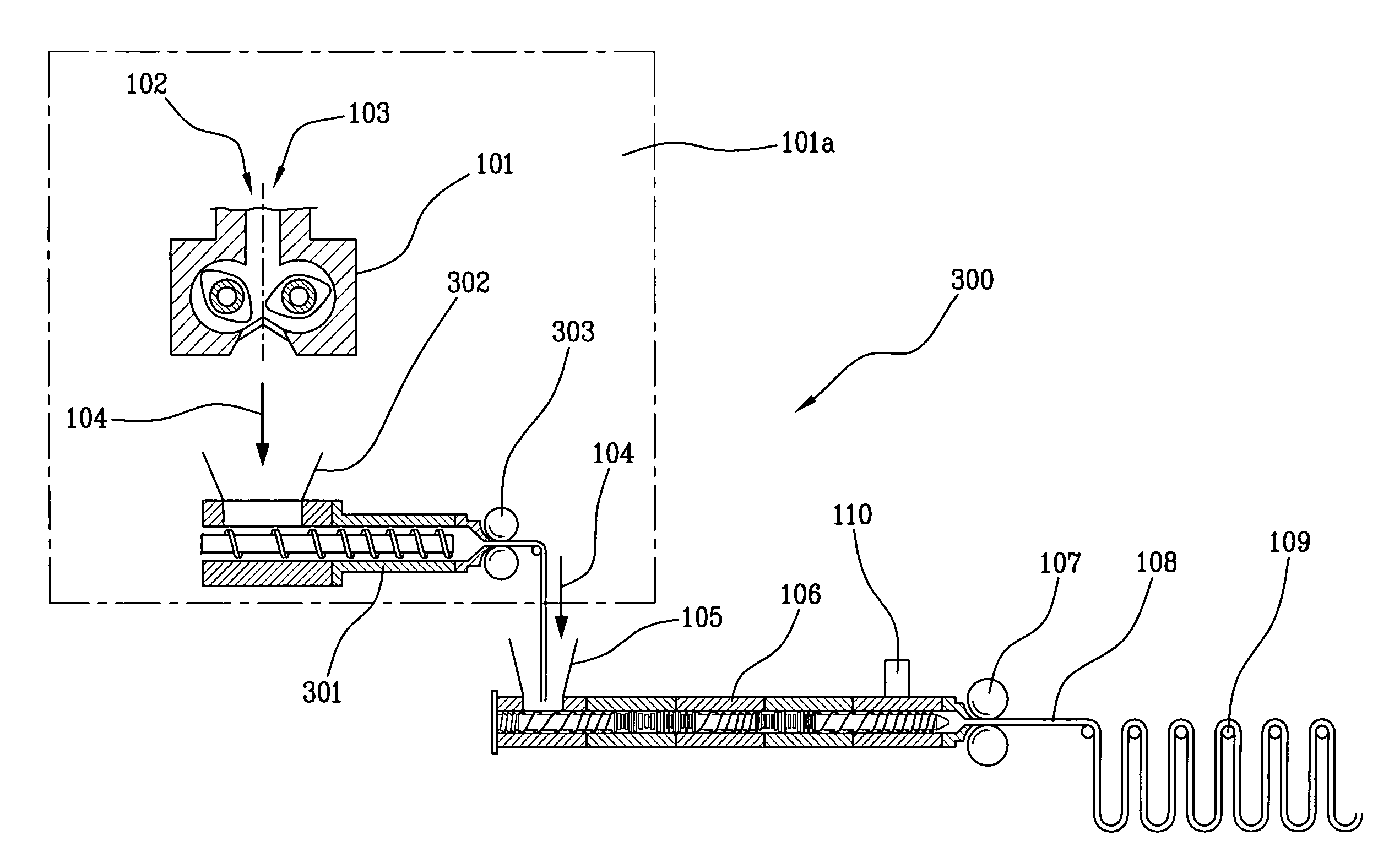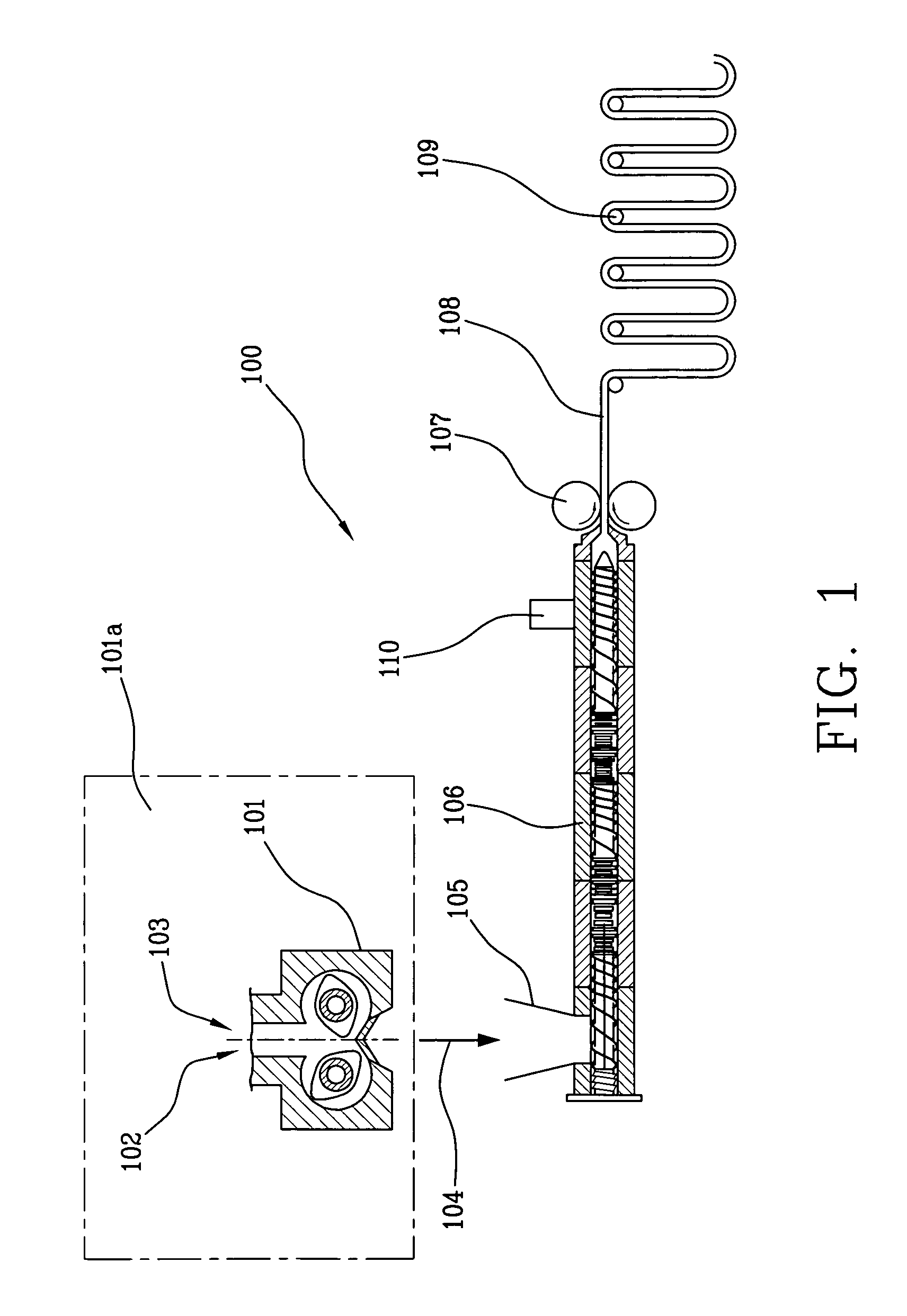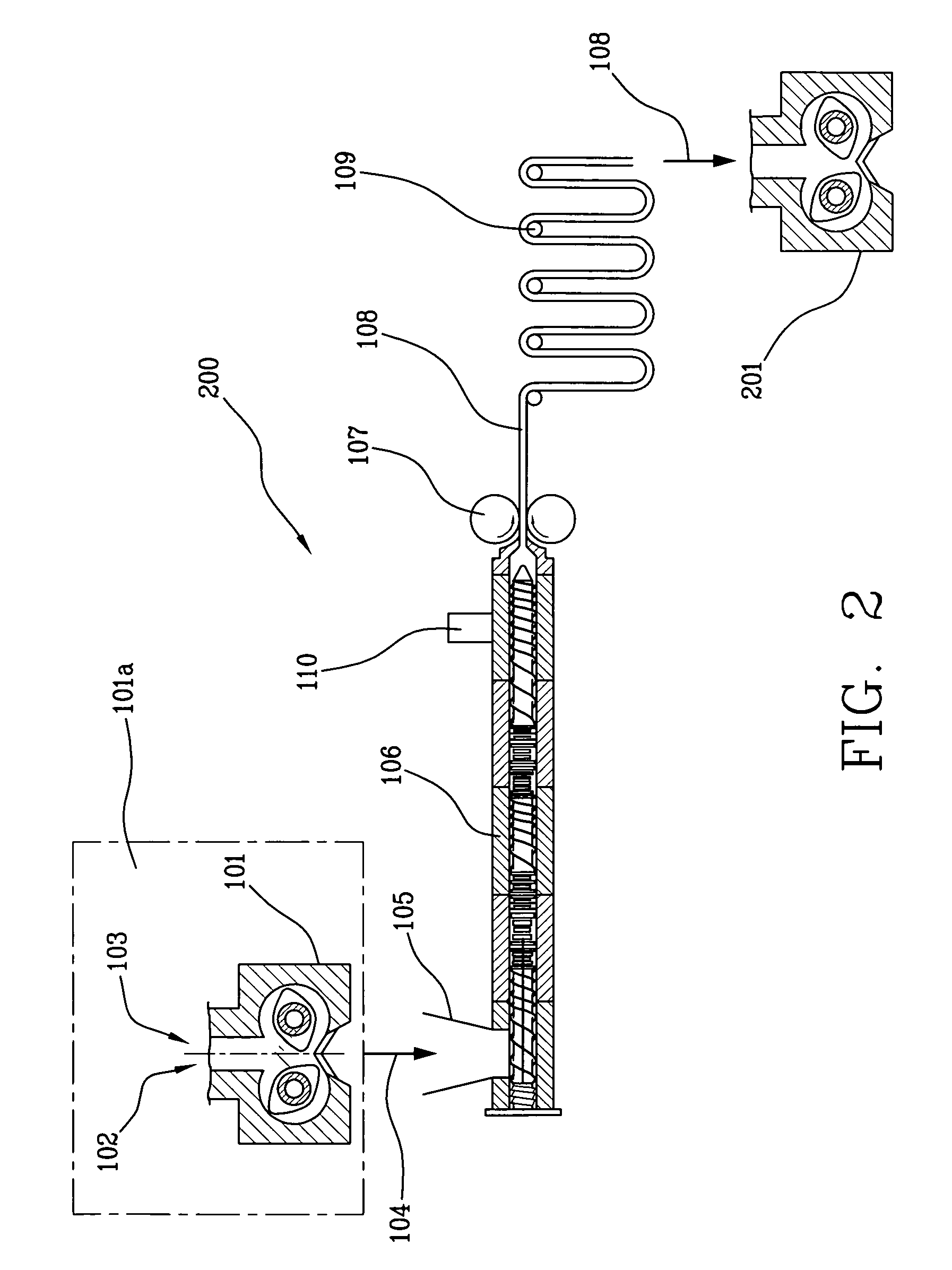Process and plant for producing an elastomeric compound
a technology of elastomeric compounds and elastomers, which is applied in the field of process and equipment for producing elastomeric compounds, can solve the problems of increasing the overall production process in time, increasing production costs, and unsatisfactory dispersion of components which are usually added to elastomeric compounds, so as to reduce the number of mixing steps and improve the dispersion of said components. , the effect of improving the dispersion
- Summary
- Abstract
- Description
- Claims
- Application Information
AI Technical Summary
Benefits of technology
Problems solved by technology
Method used
Image
Examples
examples 1-3
[0157]Preparation of the Elastomeric Compounds
[0158]The receipt of the prepared elastomeric compounds was given in Table 1 (the amounts of the various components are given in phr).
TABLE 1COMPONENTphrS-SBR90BR35Silica70X50S ®11.2Zinc oxide2.5Stearic acid2.0Wax1.0Aromatic oil8.0Antioxidant2.0Sulfur1.2DPG802.0CBS2.0S-SBR: solution-prepared styrene / 1,3-butadiene copolymer having a styrene content of 25% by weight and a vinyl content of 50% by weight, with respect to the total copolymer weight; and containing 37.5 phr of aromatic oil (Buna ® VSL 5025-1 - Lanxess);BR: polybutadiene (Europrene Neocis ® BR40 - Polimeri Europa);Silica: Zeosil ® 1165 MP (Rhodia);X50S ®: silane coupling agent comprising 50% by weight of carbon black and 50% by weight of bis(3-triethoxysilylpropyl)tetrasulphide (Degussa-Hüls);Antioxidant: phenyl-p-phenylenediamine (6-PPD - Akzo Nobel);DPG80 (accelerator): diphenyl guanidine (Rhenogran ®DPG80 - Rhein Chemie);CBS (accelerator): N-cyclohexyl-2-benzothiazyl-sulphen...
example 2
Invention
[0186]The elastomeric compound was produced by using a plant according to FIG. 4.
[0187]To this aim, the elastomeric compound obtained according to Example 1, was directly fed (without cooling) to a conveying extruder (i.e. a single screw extruder), operating at the following working conditions:[0188]feeding rate: 4100 kg / h;[0189]screw speed: 20 rpm;[0190]temperature profile: 30° C.;[0191]elastomeric compound temperature measured at extruder discharge: 110° C.
[0192]The elastomeric compound discharged from the conveying extruder was cooled to room temperature (23° C.) and subsequently fed to a self-wipening co-rotating intermeshing twin screw extruder Maris TM92HT having a nominal screw diameter of 92 mm and a L / D ratio of 32, operating at the following working conditions:[0193]feeding rate: 250 kg / h;[0194]twin screw speed: 70 rpm;[0195]torque: 63%;[0196]temperature profile: 40-50-60-50-40-30-20-20° C.;[0197]elastomeric compound temperature measured at extruder discharge: 120...
example 3
Invention
[0200]The elastomeric compound was produced by using a plant according to FIG. 5.
[0201]To this aim, all the components reported in Table 1, except from sulfur and accelerators (DPG80 and CBS), were mixed together in a Banbury® mixer (model F270), operating at the following working conditions:[0202]feeding: 225 kg;[0203]temperature: 30° C.;[0204]mixing time: 240 seconds;[0205]fill factor: 68%;[0206]rotor speed: 50 rpm;[0207]discharge temperature: 150° C.
[0208]To this aim, the elastomeric compound discharged from the Banbury® mixer was directly fed (without cooling) to a conveying extruder (i.e. a single screw extruder), operating at the following working conditions:[0209]feeding rate: 3400 kg / h;[0210]screw speed: 17 rpm;[0211]temperature profile: 30° C.;[0212]elastomeric compound temperature measured at extruder discharge: 145° C.
[0213]The elastomeric compound discharged from the conveying extruder, was cooled to room temperature (23° C.) and subsequently fed to a self-wipen...
PUM
| Property | Measurement | Unit |
|---|---|---|
| temperature | aaaaa | aaaaa |
| temperature | aaaaa | aaaaa |
| temperature | aaaaa | aaaaa |
Abstract
Description
Claims
Application Information
 Login to View More
Login to View More - R&D
- Intellectual Property
- Life Sciences
- Materials
- Tech Scout
- Unparalleled Data Quality
- Higher Quality Content
- 60% Fewer Hallucinations
Browse by: Latest US Patents, China's latest patents, Technical Efficacy Thesaurus, Application Domain, Technology Topic, Popular Technical Reports.
© 2025 PatSnap. All rights reserved.Legal|Privacy policy|Modern Slavery Act Transparency Statement|Sitemap|About US| Contact US: help@patsnap.com



